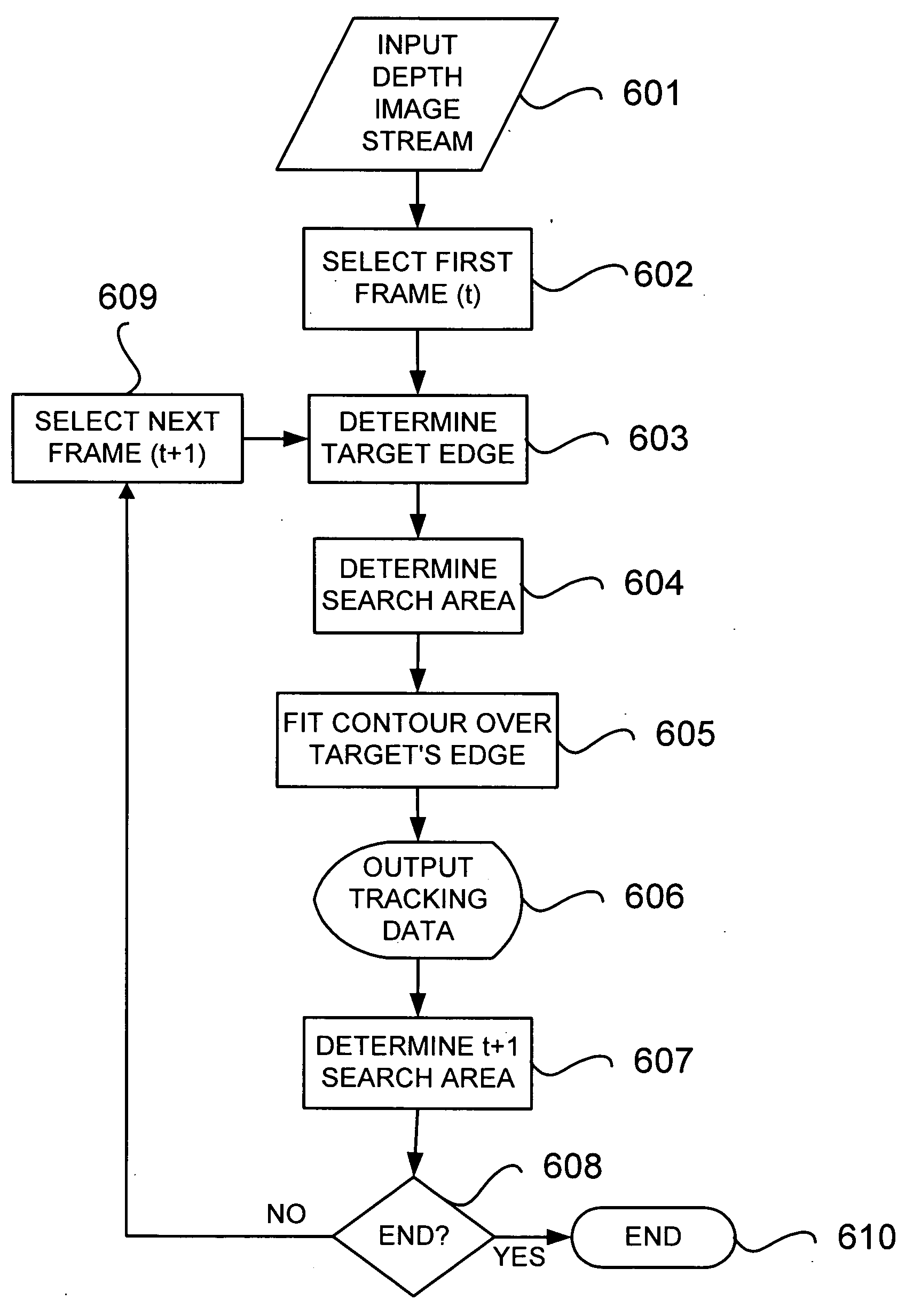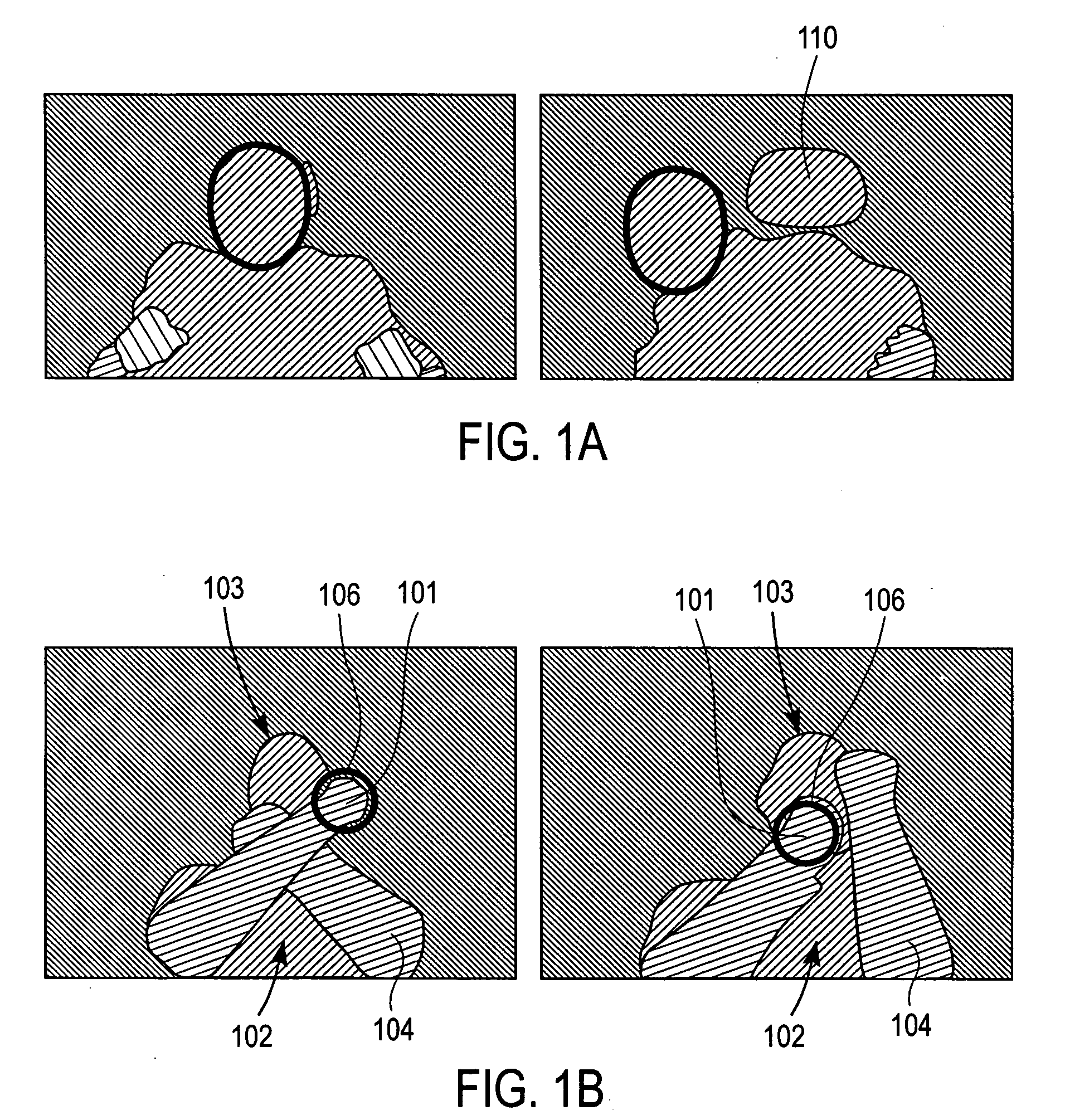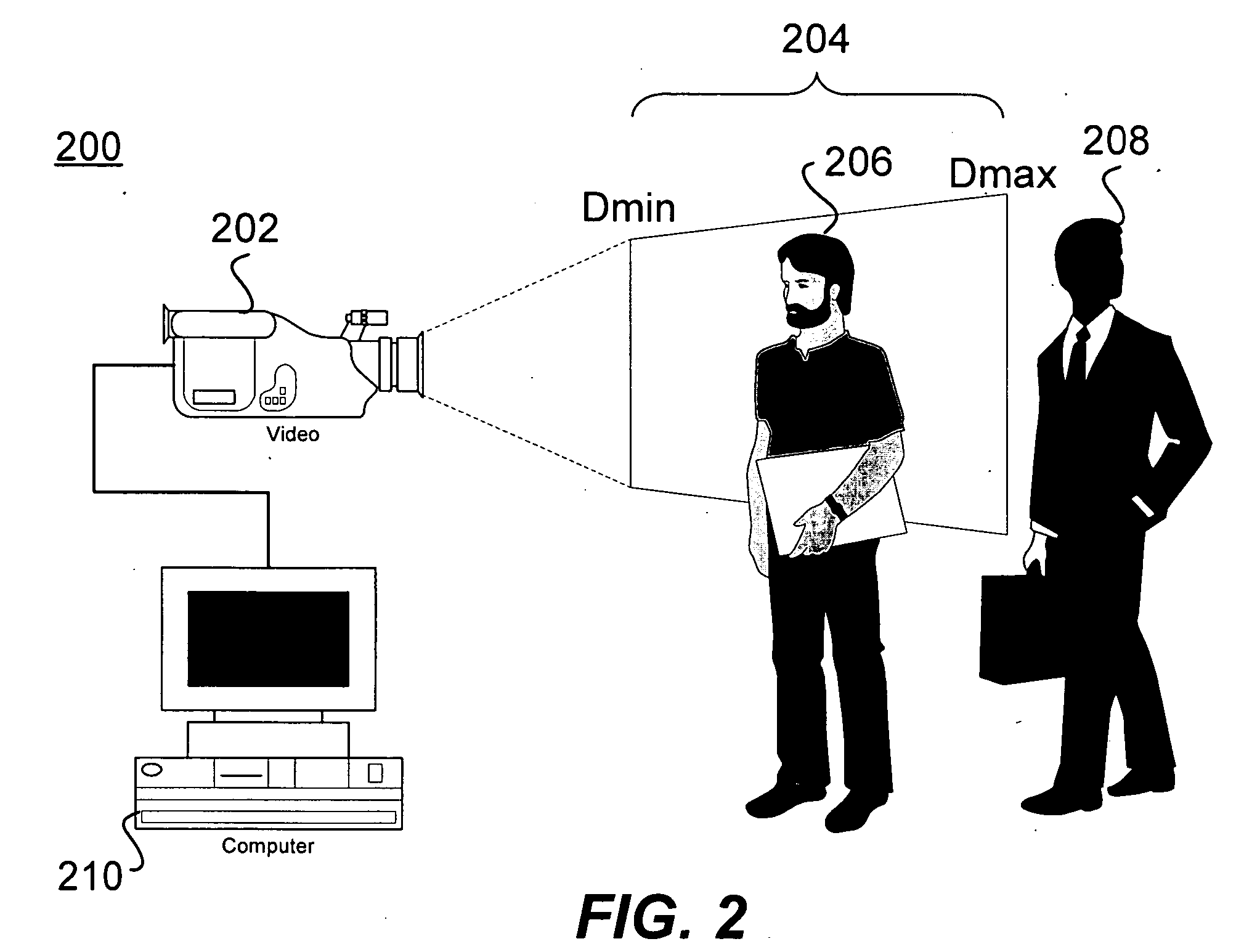Visual tracking using depth data
a depth data and depth data technology, applied in the field of computer vision, can solve the problems of algorithm failure, method using templates or probabilistic frameworks that do not function very robustly, and conventional tracking algorithms often fail,
- Summary
- Abstract
- Description
- Claims
- Application Information
AI Technical Summary
Benefits of technology
Problems solved by technology
Method used
Image
Examples
Embodiment Construction
The Figures and the following description relate to preferred embodiments of the present invention by way of illustration only. It should be noted that from the following discussion, alternative embodiments of the structures and methods disclosed herein will be readily recognized as viable alternatives that may be employed without departing from the principles of the claimed invention.
Referring now to FIG. (“FIG.”) 1A, depth images of a driver with different positions for the upper torso are shown with the output of an elliptic tracking system. A depth image is visually represented with variations in the pixel intensity based on the depth value, that is, the objects closer to the camera appear brighter and progressively darker until the background outside a depth window is shown as black. A depth sensor can be set to capture or sense depth information for objects within a specified depth range or depth window. When this is done in real-time and a stream of depth images or frames ...
PUM
 Login to View More
Login to View More Abstract
Description
Claims
Application Information
 Login to View More
Login to View More - R&D
- Intellectual Property
- Life Sciences
- Materials
- Tech Scout
- Unparalleled Data Quality
- Higher Quality Content
- 60% Fewer Hallucinations
Browse by: Latest US Patents, China's latest patents, Technical Efficacy Thesaurus, Application Domain, Technology Topic, Popular Technical Reports.
© 2025 PatSnap. All rights reserved.Legal|Privacy policy|Modern Slavery Act Transparency Statement|Sitemap|About US| Contact US: help@patsnap.com



